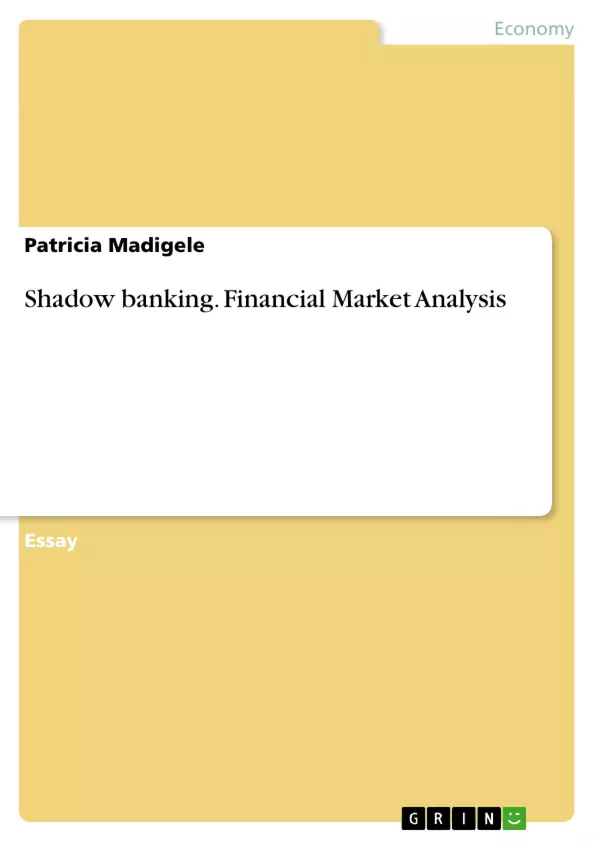The international financial system (IFS) has grown over the past decade. One of its developments is the shadow banking system which performs roles such as maturity and liquidity transformation. The 2007/2008 global recession has once again shown that the global economy is inter-connected as the effects of the financial crisis were propagated from the US to the less developed world. This has further exposed the weaknesses in the IFS which include lack of supervision and proper regulation in the financial activity, shadow banking activities being cited as one of the key areas that lack proper regulation.This paper assesses the risks and/or concerns of shadow banking as a part of the IFS.
Inhaltsverzeichnis (Table of Contents)
- INTRODUCTION
- WHAT IS SHADOW BANKING?
- RISKS ASSOCIATED WITH SHADOW BANKING
- Transmission of risks from the regular banking system
- High Leverage
- Avenue for bypassing rules
- Creation of bank-like runs
- RISKS ASSOCIATED WITH SHADOW BANKING IN SOUTH AFRICA
- CONCLUSION
Zielsetzung und Themenschwerpunkte (Objectives and Key Themes)
This paper analyzes the risks associated with shadow banking within the International Financial System (IFS). The paper argues that despite the benefits of shadow banking, such as risk diversification, its lack of regulation poses significant threats to financial stability. It examines the risks specific to the South African context and discusses potential solutions.
- The role of shadow banking in the global financial system
- The risks associated with shadow banking, including high leverage and the transmission of risks from the regular banking system
- The impact of shadow banking on financial stability, particularly in the context of the 2007/2008 global financial crisis
- The risks of shadow banking in South Africa and the potential impact of Basel III regulations
- The need for increased regulation and oversight of shadow banking activities
Zusammenfassung der Kapitel (Chapter Summaries)
- INTRODUCTION: This section introduces the paper's focus on the risks posed by shadow banking within the context of the global financial system. It highlights the fragility of the global economy and the significance of financial crises, referencing examples from emerging markets.
- WHAT IS SHADOW BANKING?: This section defines shadow banking as credit intermediation outside the regular banking system. It highlights the importance of shadow banking in diversifying risks and its role in the South African market.
- RISKS ASSOCIATED WITH SHADOW BANKING: This section outlines several risks associated with shadow banking, including the transmission of risks from the regular banking system, high leverage, and the potential for bypassing regulations. It argues that shadow banking can contribute to systematic risk in the financial system.
- RISKS ASSOCIATED WITH SHADOW BANKING IN SOUTH AFRICA: This section discusses the specific risks of shadow banking in South Africa, emphasizing that the risks are less severe than in developed countries due to the smaller scale of shadow banking activities. It also discusses the potential impact of Basel III regulations.
Schlüsselwörter (Keywords)
This paper examines the risks and concerns of shadow banking as a key component of the International Financial System (IFS). It explores themes such as financial stability, regulation, systemic risk, and the global financial crisis, highlighting the need for increased oversight of shadow banking activities. Specific aspects discussed include risk diversification, leverage, and the potential for regulatory arbitrage. The paper analyzes the impact of Basel III regulations on shadow banking in South Africa, exploring the risks and potential benefits of these measures.
- Citar trabajo
- Patricia Madigele (Autor), 2012, Shadow banking. Financial Market Analysis, Múnich, GRIN Verlag, https://www.grin.com/document/269625



